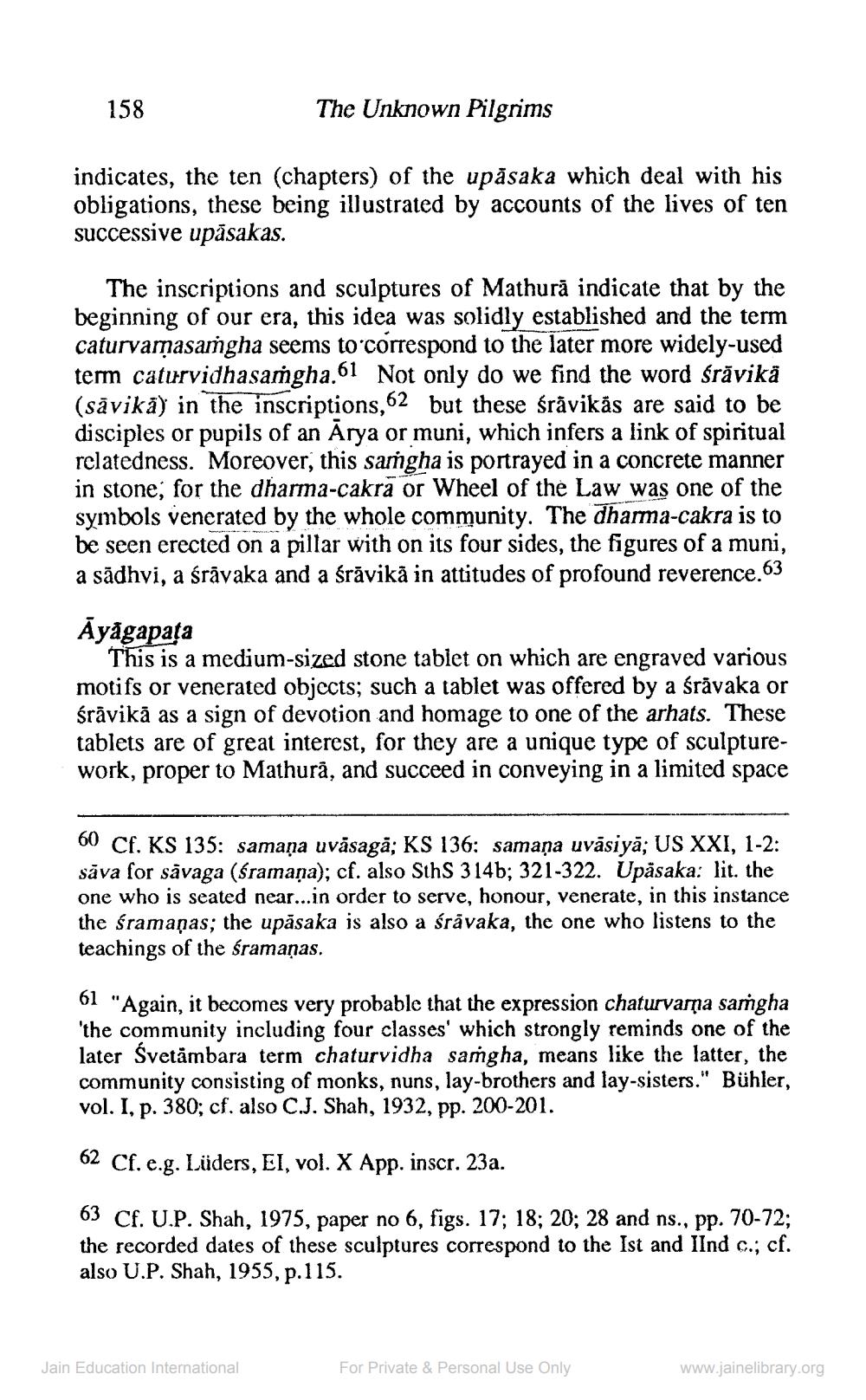________________
158
The Unknown Pilgrims
indicates, the ten (chapters) of the upăsaka which deal with his obligations, these being illustrated by accounts of the lives of ten successive upāsakas.
The inscriptions and sculptures of Mathură indicate that by the beginning of our era, this idea was solidly established and the term caturvarṇasaṁgha seems to correspond to the later more widely-used term caturvidhasaṁgha.61 Not only do we find the word śrāvika (sāvikā) in the inscriptions, 62 but these śrāvikäs are said to be disciples or pupils of an Arya or muni, which infers a link of spiritual relatedness. Moreover, this saṁgha is portrayed in a concrete manner in stone, for the dharma-cakra or Wheel of the Law was one of the symbols venerated by the whole community. The dharma-cakra is to be seen erected on a pillar with on its four sides, the figures of a muni, a sādhvi, a śrāvaka and a śrāvikā in attitudes of profound reverence.63
Āyagapata
This is a medium-sized stone tablet on which are engraved various motifs or venerated objects; such a tablet was offered by a śrävaka or śrāvikā as a sign of devotion and homage to one of the arhats. These tablets are of great interest, for they are a unique type of sculpturework, proper to Mathurā, and succeed in conveying in a limited space
60 Cf. KS 135: samaņa uvāsagā; KS 136: samaņa uvāsiyā; US XXI, 1-2: săva for sävaga (śramana); cf. also SthS 314b; 321-322. Upasaka: lit. the one who is seated near...in order to serve, honour, venerate, in this instance the śramanas; the upăsaka is also a śrävaka, the one who listens to the teachings of the śramaņas.
61 "Again, it becomes very probable that the expression chaturvarna samgha 'the community including four classes' which strongly reminds one of the later Śvetämbara term chaturvidha saṁgha, means like the latter, the community consisting of monks, nuns, lay-brothers and lay-sisters." Bühler, vol. I, p. 380; cf. also C.J. Shah, 1932, pp. 200-201.
62 Cf.e.g. Lüders, EI, vol. X App. inscr. 23a.
63 Cf. U.P. Shah, 1975, paper no 6, figs. 17; 18; 20; 28 and ns., pp. 70-72; the recorded dates of these sculptures correspond to the Ist and Ilnd c.; cf. also U.P. Shah, 1955, p.115.
Jain Education International
For Private & Personal Use Only
www.jainelibrary.org




